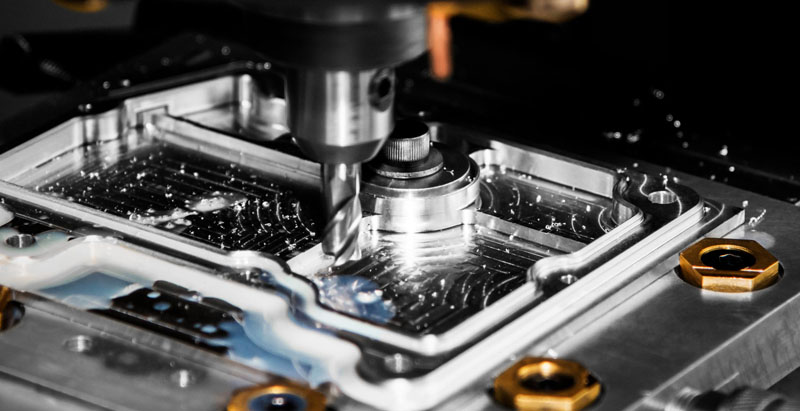Artificial Intelligence (AI) has become a transformative force in various industries, and CNC (Computer Numerical Control) machining is no exception. By integrating AI into CNC machining processes, manufacturers can achieve unprecedented levels of precision, efficiency, and automation. This article delves into the ways AI is optimizing CNC machining, exploring its impact on toolpath optimization, predictive maintenance, real-time process monitoring, quality control, and production scheduling.
Toolpath Optimization
AI algorithms can analyze complex geometries and material properties to determine the most efficient cutting paths. By optimizing these toolpaths, AI reduces machining time and minimizes tool wear, leading to cost savings and improved productivity. For instance, AI-driven systems can adjust cutting parameters in real-time, adapting to variations in material hardness or unexpected obstacles, ensuring consistent quality and reducing the likelihood of errors.
Predictive Maintenance
Unplanned machine downtime can significantly disrupt production schedules and increase operational costs. AI addresses this challenge by predicting maintenance needs before failures occur. By analyzing data from sensors embedded in CNC machines, AI identifies patterns and anomalies that indicate potential issues. This predictive capability allows maintenance teams to address problems proactively, reducing downtime and extending the lifespan of machinery. Implementing AI-driven predictive maintenance strategies not only enhances machine reliability but also optimizes resource allocation by scheduling maintenance activities during planned downtimes.

Real-Time Process Monitoring and Control
AI enhances real-time monitoring of CNC machining processes by processing vast amounts of data generated during operations. This capability enables immediate detection of deviations from desired parameters, allowing for swift corrective actions. For example, if a tool begins to deviate from its intended path due to wear or material inconsistencies, AI systems can adjust cutting speeds or tool positions instantaneously to maintain product quality. This level of control minimizes waste, reduces rework, and ensures that the final product meets exact specifications.
Quality Control and Defect Detection
Maintaining high-quality standards is paramount in CNC machining. AI contributes to quality control by analyzing data from various stages of the manufacturing process to identify potential defects. Machine learning models can recognize patterns associated with defects such as surface roughness, dimensional inaccuracies, or structural weaknesses. By detecting these issues early, AI enables manufacturers to implement corrective measures promptly, reducing scrap rates and enhancing overall product quality. Furthermore, AI-driven quality control systems can learn from historical data to continuously improve their accuracy in defect detection, leading to a cycle of ongoing improvement.
Production Scheduling and Optimization
Efficient production scheduling is crucial for meeting deadlines and optimizing resource utilization. AI assists in this area by analyzing factors such as machine availability, job priorities, and workforce capacity to create optimal production schedules. By considering real-time data and potential disruptions, AI can adjust schedules dynamically, ensuring that production targets are met while minimizing idle times and bottlenecks. This adaptability leads to more agile manufacturing processes, allowing companies to respond swiftly to changing market demands or unexpected challenges.
Case Studies and Applications
Several industries have successfully integrated AI into their CNC machining processes:
– Automotive Industry: Manufacturers use AI to optimize the machining of engine components, resulting in reduced cycle times and improved fuel efficiency.
– Aerospace Sector: AI-driven predictive maintenance ensures the reliability of critical machining equipment, enhancing the safety and performance of aerospace components.
– Medical Device Manufacturing: AI enhances precision in machining medical implants, ensuring they meet stringent regulatory standards and patient-specific requirements.
Challenges and Considerations
While AI offers numerous benefits, its integration into CNC machining presents challenges:
– Data Quality and Quantity: AI systems require large datasets for training. Ensuring the availability of high-quality data is essential for effective AI implementation.
– Integration with Legacy Systems: Many manufacturing facilities operate legacy CNC machines. Integrating AI into these systems may require significant modifications or upgrades.
– Skilled Workforce: Implementing AI necessitates a workforce skilled in both machining and data science. Investing in training and development is crucial to bridge this gap.
Future Outlook
The future of CNC machining lies in the continued integration of AI and other advanced technologies. Developments such as the Industrial Internet of Things (IIoT) will enable even greater connectivity and data sharing between machines, further enhancing AI’s capabilities. Additionally, advancements in machine learning algorithms will lead to more sophisticated predictive models, driving efficiency and precision to new heights. As AI technology evolves, its role in CNC machining will likely expand, encompassing areas such as supply chain optimization and customer demand forecasting.
Conclusion
Artificial Intelligence is revolutionizing CNC machining processes by introducing unprecedented levels of optimization and automation. From toolpath optimization and predictive maintenance to real-time process monitoring and quality control, AI enhances every aspect of CNC machining. By embracing AI technologies, manufacturers can achieve higher efficiency, reduced costs, and superior product quality, positioning themselves competitively in the evolving manufacturing landscape.



